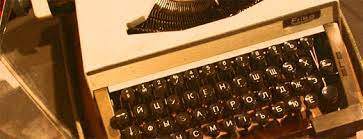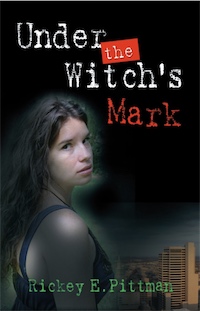Samizdat: The Ghost of Alexandr Solzhenitsyn
 I never thought this day would come to America. The liberal left, the media, the governmental deep state have determined to crush and gain control over the MAGA movement that President Trump started. They began by immediately censoring the opinions, thoughts, books, art, movies, and protests of half of the American population. Twitter and Facebook have already closed the accounts of a huge percentage of its followers. The mainstream media (television and newspapers) have
I never thought this day would come to America. The liberal left, the media, the governmental deep state have determined to crush and gain control over the MAGA movement that President Trump started. They began by immediately censoring the opinions, thoughts, books, art, movies, and protests of half of the American population. Twitter and Facebook have already closed the accounts of a huge percentage of its followers. The mainstream media (television and newspapers) have
In any war, attacking and closing down communication systems is a tested tactic. If the enemy can’t communicate, they can’t organize well enough to defeat you. I think they underestimate the power of the truth and the determination of 80-million American citizens.
It is time for Samizdat to reemerge.
Samizdat is the clandestine creating, copying, and distribution of literature banned or censored by the state, especially formerly in the communist countries of eastern Europe. It is literature that has no hope of being published in normal channels or if the writing is politically suspect. It is underground self-publishing that was passed from individual to individual. Writing and reading samizdat is a form of dissident activity, of resistance. With the increased pressure and propaganda of media, the schemes of political figures and powerful liberal elite, and tech monopolies, an underground press is needed.
Samizdat places the acts of writing, creating, and distribution upon the individual, As *Vladimir Bukivsky, Russian-born dissident in the 50s-70sk said about samizdat: “I write it myself, edit it myself, censor it myself, publish it myself, distribute it myself, and spend time in prison for it myself.” Think of how many American citizens get their information about politics, the arts, religion, and what’s really going on in the real America. Perhaps it’s a good thing that we will be forced to find other ways to express ourselves, to protest our treatment, and to change our society.
What forms will/could the new samizdat take?
1. People may learn to write real letters again.
2. New TV, radio, and newspaper media will emerge, though they will risk the censorship of the Deep State.
3. I predict that short wave radio stations will reemerge, a kind of Radio Free America.
4. There will be more spoken word, people sharing openly until pressure increases to control public speech.
5. American blogs, podcasts, and newspapers will move underground and build new audiences.
Alexandr Solzhenitsyn changed the world and the Soviet Union by Samizdat. I’ve been rereading his works of again. Besides saying, “I told you this would happen in Warning to the West,” I think his ghost would sadly shake his head and say, “Your mainstream media and the political Deep State have damaged much of America, cover-upped corruption, and tried to erase America’s past, but they haven’t won yet. Your own samizdat will immerge soon,”
*Vladimir Bukovsky, a Russian-born British human rights activist and writer. From the late 1950s to the mid-1970s, he was a prominent figure in the Soviet dissident movement, well known at home and abroad. (Wikipedia)

 I recently conducted an interview with, Nadia, a Russian immigrant. Tall and attractive, she’s been a LEGAL citizen now for a few years. She was born and raised in Minsk, was a Lenin Eagle and later a Pioneer. She now resides in New Orleans. Until the COVID shutdown, she had been making a living with a floral business and decorating for weddings and special events.
I recently conducted an interview with, Nadia, a Russian immigrant. Tall and attractive, she’s been a LEGAL citizen now for a few years. She was born and raised in Minsk, was a Lenin Eagle and later a Pioneer. She now resides in New Orleans. Until the COVID shutdown, she had been making a living with a floral business and decorating for weddings and special events. Under the Witch’s Mark is an excellent example of coming of age during the Age of Aquarius.
Under the Witch’s Mark is an excellent example of coming of age during the Age of Aquarius. The first novel I read in 2021 was Innocence Lost: The Legend of Henrietta Clay by Rita Ownby Holcomb. (Fountain Springs Publishing). The novel is well constructed with 44 dated chapters starting with August of 1860 and ending Christmas Eve, 1864. Innocence Lost is the first in a series that spans from 1860-1920.
The first novel I read in 2021 was Innocence Lost: The Legend of Henrietta Clay by Rita Ownby Holcomb. (Fountain Springs Publishing). The novel is well constructed with 44 dated chapters starting with August of 1860 and ending Christmas Eve, 1864. Innocence Lost is the first in a series that spans from 1860-1920.